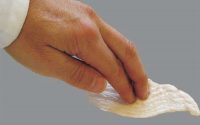The danger of mechanical massage of percussion devices
Recent years see the popularity of percussion or massage gun device, particular in sports training. The percussion causes vibration that can alter stretch reflex sensitivity and in turn affect the motor unit threshold, firing rate and maximal voluntary strength on muscle action.
Massage gun has been used for recovery after exercise. According to a survey in the US, most sports therapists or trainers (77%) directed clients to the manufacturer and websites to purchase such devices. Most respondents used a medium and low device speed setting for pre- and post-exercise (62%), pain modulation (59%), and myofascial mobility (52%). A large proportion of respondents preferred a total treatment time between 30 seconds and three minutes.
Nevertheless, this massage gun is quite popular for use in self use. Now, it seems that there have been few reports on the danger of the (mis-)use of such device.
- A 27-year-old female from the US presented in the emergency department with headache, neck pain, and dizziness. She was found to have vertebral artery dissection after the repetitive use of a handheld massage gun. Another case was reported in Saudi Arabia involving a 43-year-old woman who presented with a history of sudden-onset dizziness, dysarthria, nausea/vomiting, tinnitus, and imbalance. The patient mentioned a first-time use of a home massage chair three weeks prior to headache onset.
- A report from Guangdong, China reported a young woman with iron deficiency anemia presented with fatigue and pain in her thigh muscles for 3 days and tea-colored urine for 1 day, after cycling and subsequently receiving percussion gun treatment by her coach to relax the tired muscles. Muscle tenderness and multiple hematomas were found on her thighs, and her urinalysis indicated hemoglobinuria. Her serum creatine kinase was reported as “undetectably high,” leading to a diagnosis of severe rhabdomyolysis.
- A report from Sichuan, China stated a 69-year-old man who had been using a massage gun around his right eye for 2 months to relieve headache. However the person went to the ophthalmological emergency department reporting eye pain and blurred vision for 5 days.
- The patient was diagnosed with lens subluxation, secondary AACG and pterygium in the right eye.
- A survey on genital injuries in the past decade includes using massage devices (also pens, pencils) that routinely resulted in urethral injuries, often requiring hospitalization.
Therapists should be aware of the contraindication and dangers of such percussion massage gun and advise on its safety and appropriate use.
